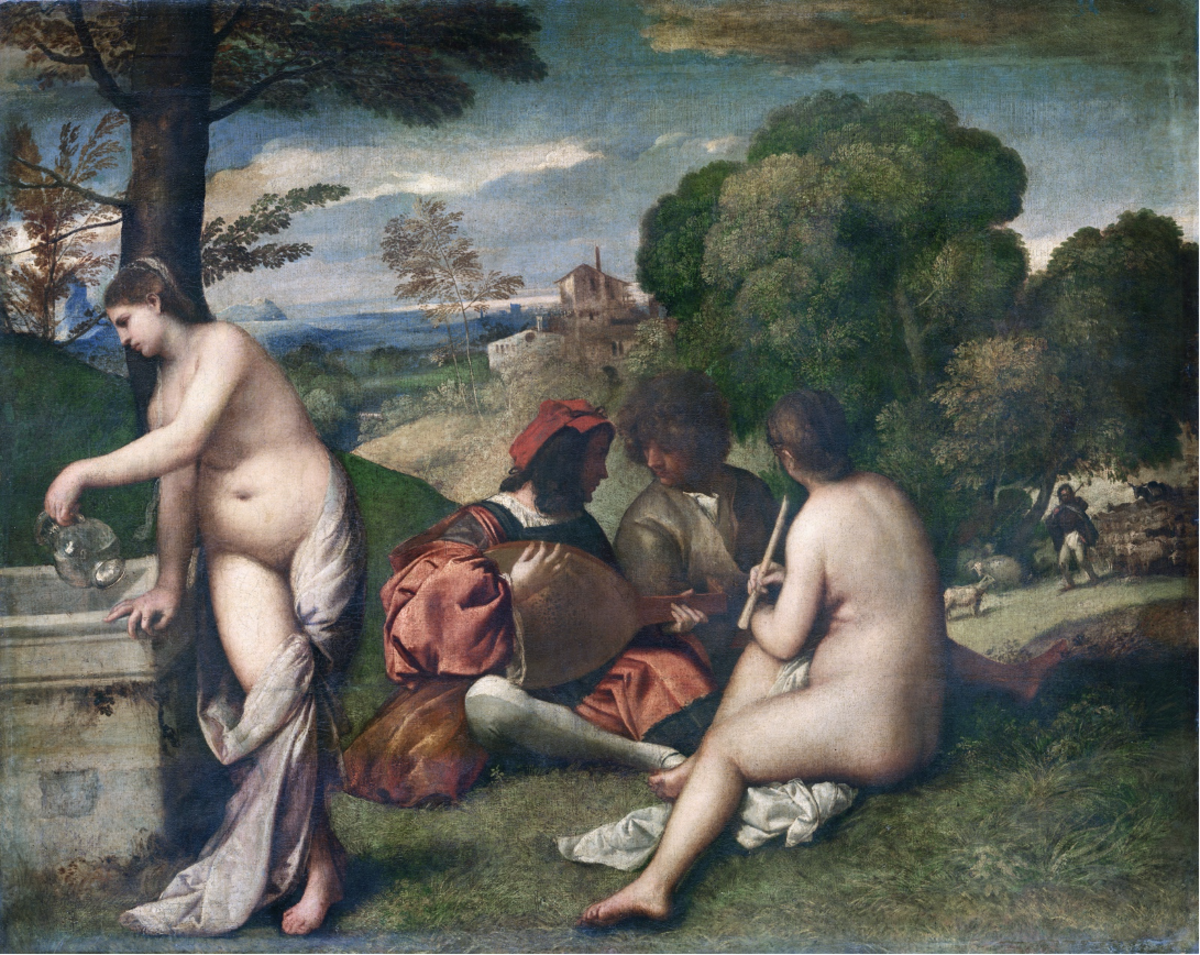Berwick St James Art Appreciation

If Music be the Food of Love – Music, Revelry & Courtship throughout the Ages
From the early Renaissance, painters have included references to music in their portrayal of Biblical narratives. However, it was the Venetian painters, Giorgione and Titian and their close association with the contemporary poets, Pietro Bembo and Jacopo Sannazaro, that the relationship with poetry, music and painting first became the source of secular images celebrating courtship. In the 16th century, Pieter Bruegel the Elder, initiated the theme of the peasant dance, but the richest period for such works was the Baroque, where Dutch artists, depicted all classes of society from peasants to the burgher class indulging in the joy of music, where such amusement was often suggestive of amorous, or seductive activity. The Rococo painter, Jean-Antoine Watteau continued the theme with the Fete Galante, to be followed by Rossetti et al.